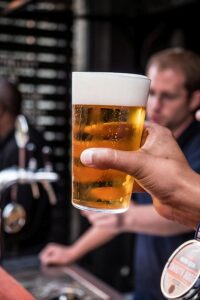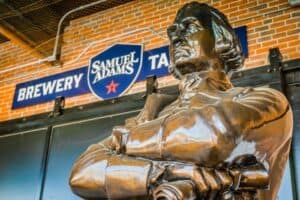When you think of President Jimmy Carter, beer probably isn’t the first thing that comes to mind. Maybe you remember him for his work in diplomacy, his efforts on energy conservation, or even his post presidency humanitarian work. But what if I told you that Carter played a key role in launching the American craft beer movement?
Yep, that’s right…the explosion of craft breweries across the U.S. can be traced back to a decision Carter made in 1978. By signing a bill that legalized homebrewing, he unknowingly set the stage for the small-batch, hop-heavy, creatively brewed beers we enjoy today. So, let’s dive into how this all happened and why every IPA lover owes Carter a toast.
The State of Beer Before Carter Got Involved

Before craft beer took over taprooms and grocery store aisles, American beer was, well…kind of boring.
For decades after Prohibition ended in 1933, beer in the U.S. was largely controlled by a handful of massive brewing companies, like Budweiser, Miller, and Coors. These big breweries focused on efficiency and mass production, churning out millions of gallons of light, mild lagers. If you wanted something dark, rich, hoppy, or experimental? Tough luck. The market had little to offer beyond the same old pale lagers.
To make matters worse, homebrewing was still technically illegal at the federal level. That meant that if you wanted to make your own beer at home, you were skirting the law, despite the fact that people were already making wine legally in their basements. This restriction stifled creativity and kept adventurous beer lovers from experimenting with different styles.
Enter Jimmy Carter.
How Carter’s Signature Changed Everything
Now, was Jimmy Carter a craft beer guy? Not really. But his brother, Billy Carter, sure was. Billy was a beer loving, down home kind of guy who even tried to cash in on his love for suds by launching his own brand, “Billy Beer” (which, unfortunately, was more of a marketing gimmick than a quality brew).
But the real magic happened in 1978, when Carter signed H.R. 1337 into law. This bill, originally about excise taxes, had an important amendment slipped in by California Senator Alan Cranston: it legalized homebrewing at the federal level for the first time since Prohibition.
That might not sound like a big deal, but it was huge. For the first time in decades, beer lovers could legally brew their own beer at home without worrying about getting fined or arrested. This opened the flood gates for experimentation, allowing people to rediscover traditional styles, play with hops and malts, and push the boundaries of what beer could be.
In other words, homebrewing became the training ground for what would eventually become the craft beer industry.
Homebrewers Turn Pro and Change the Game

Once homebrewing was legal, things started bubbling (pun absolutely intended). Suddenly, hobbyists across the country were brewing everything from bold IPAs to rich stouts, sharing their creations with friends, and dreaming bigger.
Some of these passionate homebrewers took things to the next level and started their own breweries. You might recognize a few of the names:
- Ken Grossman (Sierra Nevada Brewing Co.) – Started brewing in his garage before launching one of the most influential craft breweries in the U.S.
- Jim Koch (Samuel Adams / Boston Beer Co.) – Turned an old family recipe into a national craft beer powerhouse.
- Charlie Papazian – Founded the American Homebrewers Association (AHA) and wrote The Complete Joy of Homebrewing, which became the ultimate guide for aspiring brewers.
With these pioneers leading the charge, the craft beer movement gained momentum throughout the ‘80s and ‘90s. Small breweries started popping up everywhere, and beer lovers got a taste of something different…something better than the watered down lagers dominating the market.
Fast Forward to Today A Craft Beer Boom
Look around now, and it’s clear just how far things have come since Carter’s 1978 decision.
The U.S. is now home to nearly 10,000 craft breweries, producing an incredible variety of beers. Whether you’re into hazy New England IPAs, barrel-aged stouts, or funky sours, there’s something out there for everyone.
Craft beer has become more than just a drink…it’s a culture. Cities like Portland, Denver, and Asheville have become beer meccas, with breweries acting as community hubs, hosting events, and supporting local economies. Even big beer companies have had to adapt, with some acquiring craft brands just to keep up with the growing demand for better beer.
And all of this? It wouldn’t have happened (at least not as quickly) without Carter’s decision to legalize homebrewing.
A Toast to President Carter (Even If He Didn’t See It Coming)

Did Jimmy Carter intend to revolutionize American beer when he signed H.R. 1337? Probably not. But whether he meant to or not, he played a major role in kicking off a beer renaissance that continues to this day.
So next time you crack open a cold craft brew, take a second to appreciate how far we’ve come. And maybe, just maybe, raise a glass to Jimmy Carter, the accidental hero of craft beer.
Leave a Reply